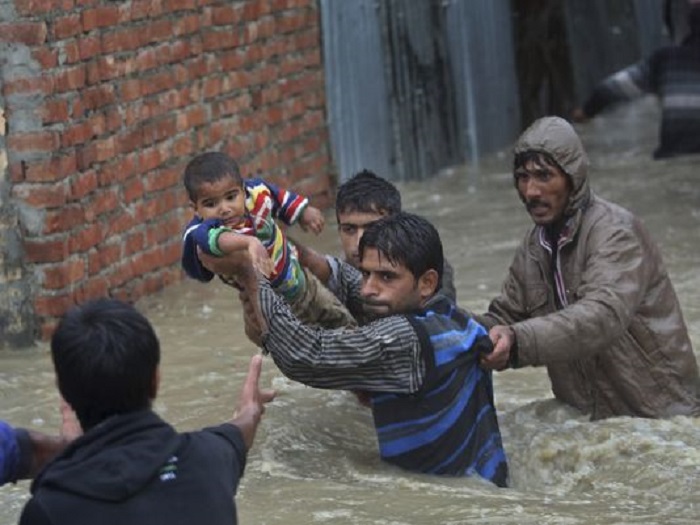Srinagar: From the dredging of the Jhelum river to installing a forewarning system to spending many crores of rupees, the Kashmir valley is better prepared than it was three years ago when a devastating flood caused havoc in the region.At the forefront has been the irrigation and flood control (IFC) department, which has made “continuous efforts” to avert a repeat of the September 2014 floods. It is however still working out on the possible long-term measures that can actually avert the repetition of a devastating deluge.In the first week of September 2014, a rare climatic phenomenon of three storms — a non-monsoon western disturbance and two cyclonic monsoon storms — rising from the Mediterranean and Arabian seas and Bay of Bengal gathered over Kashmir.As it rained heavily and incessantly for almost a week, the Jhelum spilled over its banks with a water volume of 1.20 lakh cusec — enormously higher than its holding capacity of 25,000 cusec.The deluge devastated Srinagar — the state’s summer capital and the commercial nerve centre of the Kashmir valley — as 68,000 tonne of rubble was removed from the district in a massive clean-up operation.Faced by poor availability of money, the IFC department began making incremental progress – dividing its plan into immediate, short, medium and long term phases.“We are better placed than we were in September 2014, but we are not enough prepared. It is going to take time to be fully prepared,” said a senior official of the IFC, who asked not to be named.The department is still brainstorming about drafting a roadmap of the long-term measures which can mitigate the flood threat in future. It has sought and evaluated the “expression of interest” from consultant companies to seek consultancy on conducting feasibility studies of floods, its mitigation and comprehensive management scheme.“This will act as a roadmap for future flood mitigation plan,” the department told the High Court in July this year where it presented its flood mitigation plan.Immediately after the 2014 floods, the department plugged 3,320 breaches and weak spots on the Jhelum and its tributaries which “withstood the test of time during the five declared floods of 2015 and also the floods of April 2017,” the department told the High Court recently. The department also worked on the permanent restoration of the river’s embankments and construction of new embankments.As the “immediate” measures were completed, the department began working on short-term priority issues in the flood management plan, aiming to restore the holding capacity of the river and its flood spill channel to the original 35,000 cusec.These measures are aimed at improving the flood management system of the Jhelum and also at providing flood protection till the comprehensive plan – long-term measures — is implemented in full, which will take five to 10 years, officials said.The measures that have been taken so far include land acquisition in Srinagar, Budgam and Bandipora districts to increase the holding capacity of the flood spill channel, dredging of the Jhelum in Srinagar and Baramulla stretches, and flood protection and anti-erosion works on the river at vulnerable spots. The project, with its various components, has a deadline of March 2018 and an approved cost of Rs 399.29 crore.The officials said 43,800 trees have also been uprooted as part of an effort to remove the “huge plantation” on the flood-spill channel which had choked its holding capacity.The department is now ideating about the medium-term flood mitigation measures and is in the process of finalising a detailed project report which aims to increase the holding capacity of the river and its flood spill channel to 60,000 cusec, the officials said.A daunting challenge before the department, however, will be to secure financing for the construction of an alternative flood-spill channel which will have a holding capacity of 60,000 cusec and run a distance of 80 km from south to north. The channel will approximately cost Rs 18,000 crore and out of that Rs 13500 crore will have to be spent of land acquisition and compensation.
Tackling challenges
- At the forefront has been the irrigation and flood control department, which has made “continuous efforts” to avert a repeat of the September 2014 floods. It is however still working out on the possible long-term measures that can actually avert the repetition of a devastating deluge
- A daunting challenge before the department, however, will be to secure financing for the construction of an alternative flood-spill channel which will have a holding capacity of 60,000 cusec and run a distance of 80 km from south to north
- The channel will approximately cost Rs 18,000 crore and out of that Rs 13500 crore will have to be spent of land acquisition and compensation. (TNS)

